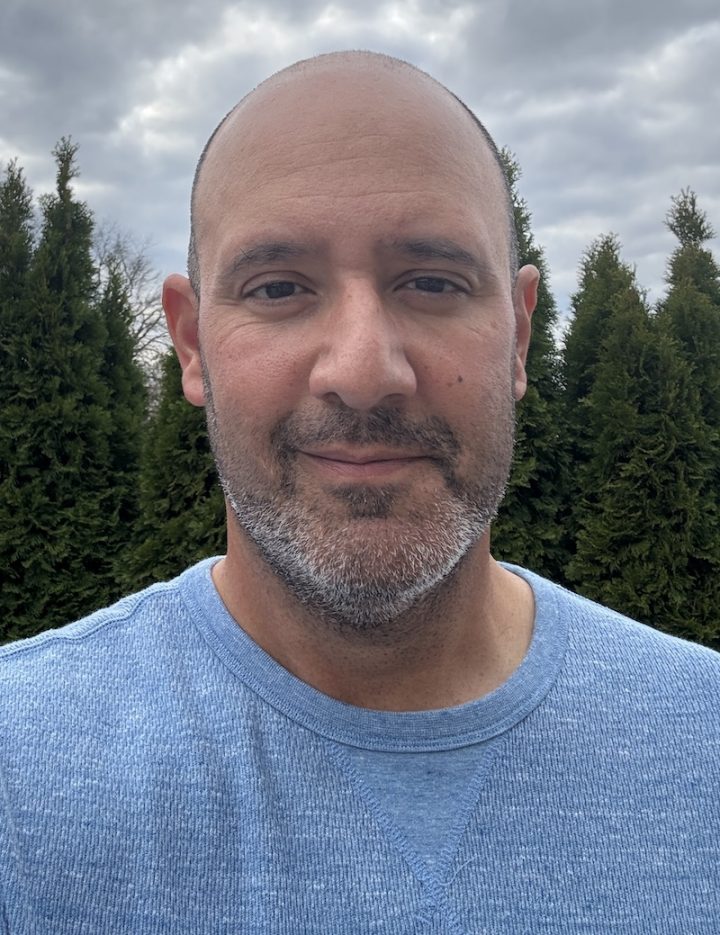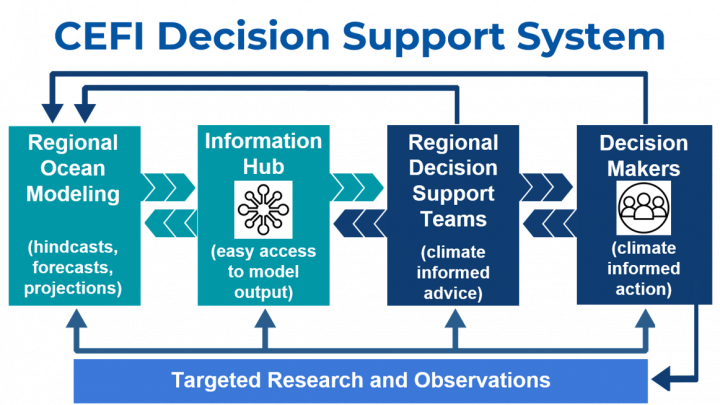November 20th, 2024
From warming waters and rising seas to melting sea ice and changing ocean pH, climate change is having major impacts on the nation’s marine and Great Lakes resources. In order to effectively prepare for and combat the effects of climate change, policymakers need robust historical simulations, as well as forecasts and projections, about how ocean and Great Lakes fisheries and ecosystems have changed and could change in the future.

That’s where NOAA’s Changing Ecosystems and Fisheries Initiative (CEFI) comes in. CEFI is an initiative that aims to provide decision makers with the information they need to effectively mitigate and adapt to the effects climate change is having – and is projected to have – on key marine and Great Lakes resources.
As part of CEFI, GFDL is developing high-resolution regional models that can simulate ocean and ecosystem changes in the coastal regions that are home to some of the country’s most economically important fisheries and protected species. The data these models produce goes directly towards informing the public about how fisheries and protected species could be affected by climate change.
“There’s a clear pipeline for taking the information we develop and produce from these models and directly applying it to different problems,” says Andrew Ross, research physical scientist at GFDL who is leading many of GFDL’s contributions to CEFI. That information “goes directly from the regional models we’re working on to the decision makers who are taking action on climate change.”
Two models are at the heart of this work: The Modular Ocean Model (MOM6) and the Carbon, Ocean Biogeochemistry and Lower Trophics (COBALT) model. MOM6 provides a powerful, numerical framework for simulating the ocean and its movements, while COBALT provides key insight into the ocean ecosystem. The first suite of seasonal forecasts produced by these models, which predict conditions over the next month to year, can skillfully predict surface and bottom temperature and salinity for the Northeast U.S. Large Marine Ecosystem region – a location that has historically been difficult for models to forecast. Meanwhile, the first suite of decadal forecasts, which predict conditions over the next year to decade, are able to skillfully predict past changes in sea surface temperature in the Northeast U.S.

Because of these results, Ross and his team are hopeful that the models can provide accurate information about changes in marine conditions over the next year, to next decade, and can offer insight into how climate change will affect fisheries and protected species to inform management decisions.
This modeling is a critical component of the CEFI, says Vince Saba, Research Fishery Biologist with NOAA Fisheries and GFDL.
“The majority of fisheries and protected species occur in coastal waters of the U.S., and thus high-resolution ocean models are needed to resolve marine ecosystem dynamics at local scales,” Saba, who serves as the lead of the CEFI Northeast decision support team and co-chair of the national decision support team. “GFDL is one of the world-leading laboratories that develops high-resolution ocean models and can combine these regional models with the lab’s global ocean forecasting system.”
The historical data from MOM6 is critical to creating skillful forecasts: NOAA’s ship-based survey data are useful but limited in terms of how much space and time they cover, and historical simulations from MOM6 help fill in those gaps in observations.
 “The CEFI’s primary objective is to produce high-resolution, three dimensional ocean models that simulate historical ocean conditions and forecast or project near-term and long-term ocean conditions that are relevant to living marine resources,” Saba says. “Historical ocean simulations are needed to understand mechanistic relationships between climate, ocean, and living marine resources (LMRs). Seasonal to annual forecasts and longer-term climate change projections can provide LMR management with information on future ocean conditions that could impact LMRs either positively or negatively.”
“The CEFI’s primary objective is to produce high-resolution, three dimensional ocean models that simulate historical ocean conditions and forecast or project near-term and long-term ocean conditions that are relevant to living marine resources,” Saba says. “Historical ocean simulations are needed to understand mechanistic relationships between climate, ocean, and living marine resources (LMRs). Seasonal to annual forecasts and longer-term climate change projections can provide LMR management with information on future ocean conditions that could impact LMRs either positively or negatively.”
Collaboration is also key to the CEFI’s success. The initiative benefits from each NOAA partner office bringing its own unique expertise and skill set, with model developers at GFDL benefitting from the observations and analyses being conducted at NOAA Fisheries and vice versa.
“NOAA internal collaboration is an essential component of the CEFI,” Saba says. “The CEFI has brought together scientists from the Office of Oceanic and Atmospheric Research, the National Ocean Service, and Fisheries, to develop and apply GFDL’s state of the art ocean modeling system to climate-informed LMR management throughout the U.S.”
The public can access the information created through CEFI via the CEFI data portal, which currently houses the first datasets on the Northwest Atlantic and will provide additional data over time.


